Welcome to Millfield
Millfield is one of an elite group of educational establishments that has, because of its stature, been able to drop the suffix 'school'. Along with Eton and Rugby its reputation for turning out sportsmen and women of the highest calibre is the envy of many. The most recent include rugby players Anthony Allen and Olly Morgan and cricketers Rory Hamilton-Brown, Simon Jones, Craig Kieswetter and James Hildreth.
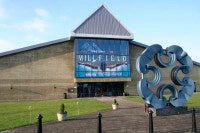 Although Millfield may be well-known for its sport, its pupils have gone on to excel in a wide range of areas. Successful old Millfieldians include 'Desperate Housewives' actress and Golden Globe winner Nicolette Sheridan, BBC chief political correspondent John Sergeant, disc jockey Tony Blackburn and Stewart Copeland, drummer with legendary rock group the Police.
Although Millfield may be well-known for its sport, its pupils have gone on to excel in a wide range of areas. Successful old Millfieldians include 'Desperate Housewives' actress and Golden Globe winner Nicolette Sheridan, BBC chief political correspondent John Sergeant, disc jockey Tony Blackburn and Stewart Copeland, drummer with legendary rock group the Police.
Add former British Lions and Wales rugby captain Gareth Edwards and Olympic swimming Gold medallist Duncan Goodhew and Millfield can be justifiably proud of its pedigree.
Today Millfield, along with its Preparatory School, has some 1700 pupils and more than 600 staff with a ratio of one teacher to every seven children. Their simple philosophy aims to help every individual child to achieve their full potential.
Millfield's approach to sport is in line with the school's belief that education is concerned with the whole human being, and that every pupil has the ability to achieve something worthwhile or even to excel in some field. The main objective of the sports programme, therefore, is to identify and develop a skill in every pupil, because achievement in one area so often proves to be the key to success in school life as a whole.
A large purpose-built campus houses a wide range of high quality facilities and a large number of highly qualified sports coaches oversee the vast array of sports on offer. Each year, around twenty-five of Millfield's students win international honours across a broad spectrum of sports. In recent years, Millfield teams have won national championships in basketball, football, golf, hockey (indoor and outdoor), girls athletics, fencing, modern pentathlon, triathlon, rugby union, boys and girls squash, cricket, orienteering and boys and girls tennis.
The Millfield campus totals 350 acres and is split into three sites, Pre-prep (nursery school), Prep School and the Senior School, with each site providing sports and other facilities for the pupils.
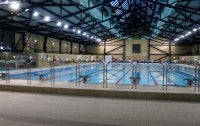 The sports facilities of the Senior School include:
The sports facilities of the Senior School include:
• Three Olympic-quality water-based astroturfs
• A 9 hole (18 tee) golf course with driving range
• An athletics arena, with track and field facilities
• Two multi-purpose sports halls
• A large equestrian centre (including an indoor riding school) and paddocks
• An indoor tennis centre with nine outdoor courts
• A 50 metre indoor swimming pool
• A large gym and a free weights room
• A fencing salle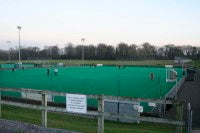
• A judo dojo
• Six cricket squares and practice net facilities
• Large multi use playing fields providing nine rugby and ten football pitches
• Three grass tennis courts
• Seven netball courts
• Eighteen boarding houses with accompanying gardens and communal areas also form part of the school grounds
All of the grounds maintenance is carried out in-house with the School employing thirty-eight groundstaff, comprising thirteen gardeners and twenty-three groundsmen, under the supervision of Grounds Manager, David Warner MSc, and his deputy Nigel Hornsby.
David arrived at Millfield in 2005 having previously worked at Ascot Racecourse and, before that, Birmingham King Edward's School, bringing with him over twenty years of experience. He is responsible for the strategic and long-term planning of the grounds and gardens departments.
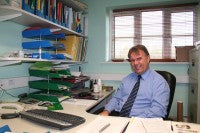 David sees ongoing training and appraisals as important to developing sport specific skills. Employees are sent on the relevant training courses and, in 2007, an apprenticeship scheme through Cannington College was instigated.
David sees ongoing training and appraisals as important to developing sport specific skills. Employees are sent on the relevant training courses and, in 2007, an apprenticeship scheme through Cannington College was instigated.
Daily management meetings are held with sports coaches and other sectors within the Millfield structure to ensure that everyone knows exactly what is required to achieve the high standards the School demands.
Ordering materials is carried out by David for distribution between the sites. This ensures that maximum value is achieved. Smaller or specific sundries are ordered by supervisors.
Maintenance regimes for all surfaces and gardens, including fertiliser, topdressing and plant selections, are set by David, again to minimise costs and maximise efficiency.
Machinery is selected by the operators once the initial proposal has been considered. This is done by on-site demonstrations, and the machine in question is selected because it does the job and suits the operator that has to perform that task.
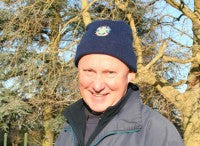 David uses a number of local dealers and other sources that are screened in order to offer a wide range of suppliers. He believes that this gives him the best equipment and materials at the best prices available.
David uses a number of local dealers and other sources that are screened in order to offer a wide range of suppliers. He believes that this gives him the best equipment and materials at the best prices available.
He says that he is very proud of his team of professionals who produce high standards of workmanship often with a very high workload. They are professional in all that they do and are, he says, a great group to work with.
Nigel Hornsby, Deputy Head of Grounds, works at the Senior School site alongside a team of six supervisors - Tom Punchard, cricket, Colin Ashman, rugby, football, cricket and golf, Bryan Shepherd, Head Gardener, Joe Bryan and Jon Lee, gardens supervisors and Graham Brown, machinery mechanic.
Nigel has been at Millfield for six years. Having himself been a school head of sport for twenty years he has a strong affinity with what is required.
Tennis
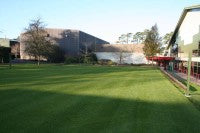 All the grass courts are maintained to county standard. The sward composition on the courts is 50% rye (three varieties) and 50% fescue (two varieties). Height of cut out of play is 20mm and, during the playing season, 7mm.
All the grass courts are maintained to county standard. The sward composition on the courts is 50% rye (three varieties) and 50% fescue (two varieties). Height of cut out of play is 20mm and, during the playing season, 7mm.
End of season renovations for the grass courts involve scarifying the courts in several directions down to a depth of 6mm using a Huxley tractor mounted scarifyer and Sisis 600 pedestrian machine.
The courts are then topdressed with a 28% Mendip clay loam applying twenty 25kg bags per court which are then oversown with a 50/50 seed mix.
They are aerated throughout the autumn and winter months when ground condition allow using a vertidrain set at different depths, with varying tine sizes.
Rugby
The 1st Team rugby pitch is the only properly constructed pitch. Built during the Queen's Silver Jubilee year (1977) it was cut and filled with primary and secondary drainage installed. Situated adjacent to the dining hall, its location makes a fine vantage point for spectators.
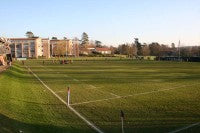 The pitch is renovated each year using a Ryetec 1600 to remove unwanted debris, aerated and topdressed with 80-100 tonne of sand and oversown with MM50 grass seed.
The pitch is renovated each year using a Ryetec 1600 to remove unwanted debris, aerated and topdressed with 80-100 tonne of sand and oversown with MM50 grass seed.
Last year the School invested in a Beamrider laser guided spray jet line marking system to help them with the line marking duties. It speeds up the work and is shared around the three sites.
Cricket
Tom Punchard (10 years service) and Mark Jones (5 years) are responsible for maintaining the senior cricket facilities. These are maintained to the highest standard, and the School has further invested in a new pavilion, artificial net practice areas (covered and outdoor) and new grass strips for the practice area.
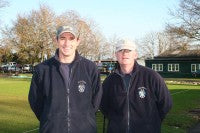
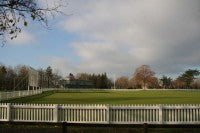
The main square provides fourteen strips, made up of three distinctly different loam types - four are Banbury, four Ongar Plus and six Mendip. Each loam gives a different performance characteristic enabling the players to gain valuable batting and bowling experiences.
The season lasts twelve weeks from mid-April to mid-July with between 35-45 fixtures being played. During the winter months the square is kept at 20mm cutting with Honda rotaries. From March the square is cut daily between 10-12mm using Dennis 36 inch mowers.
 In March the outfield is sprayed in with a worm suppressant, fertilised with Marathon 16:8:8 and overseeded with MM60. Both the square and outfield are aerated when conditions allow using the vertidrain, but no spiking of the square takes place after January.
In March the outfield is sprayed in with a worm suppressant, fertilised with Marathon 16:8:8 and overseeded with MM60. Both the square and outfield are aerated when conditions allow using the vertidrain, but no spiking of the square takes place after January.
Pre-season rolling begins in mid-March using the mowers to roll in a union jack pattern. They then progress on to the PowerRoll (0.5 tonne), gradually increasing ballast to one tonne, followed by the Autoroller unballasted (1.2 tonnes) and finally ballasted at two tonnes. A small sarrell roller is used to keep the surface open and free draining. The square is then fed using an organic fertiliser product with an NPK ratio of 12:3:7 followed by a series of liquid feeds.
All wickets benefit from a fourteen day prep in the lead up to a match, first being cut to 8mm, followed by a period of raking and brushing to clean up the surface and remove debris. The square is then cut to 4mm, watered and rolled (40 minutes maximum) before the final cut and mark is required. Sheets and covers are available to control the drying of the wickets.
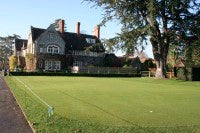 End of season renovations involve cleaning up the square, scarifying it in several directions to remove vegetation and creating a key for loam and seed.
End of season renovations involve cleaning up the square, scarifying it in several directions to remove vegetation and creating a key for loam and seed.
Gardens
The School has extensive gardens which contain a unique collection of outdoor sculptures. Dotted around the campus are fine examples of internationally renowned works of art. Each year a new sculpture is purchased and placed in the School grounds.
There are plenty of beds, borders and hedges to maintain. Wherever you look the gardens and grounds are immaculately kept.
A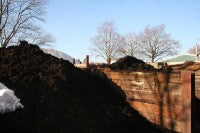 ll leaf and grass debris is collected and stored on-site, along with an abundance of horse manure from the stables. David has recently invested in a large CourseCare recycling machine that shreds and mixes material together. A 50/50 mix of manure and grass/leaf clippings are put through the machine on a daily basis.
ll leaf and grass debris is collected and stored on-site, along with an abundance of horse manure from the stables. David has recently invested in a large CourseCare recycling machine that shreds and mixes material together. A 50/50 mix of manure and grass/leaf clippings are put through the machine on a daily basis.
The making of the compost has become a fulltime job for one staff member who spends every day of the week moving, mixing and storing the composted materials. He also has to monitor the temperature of the compost ensuring that it remains at 60OC during the composting cycle of eight weeks.
If the temperature drops, he will turn it over or transfer it into another bay to allow more oxygen into the material which will raise the temperature. Once it has gone through its cycle the material is used around the School for mulching shrub beds and borders.
Kingweston site.
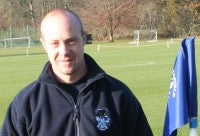 The Kingweston site is managed by Lee Carroll who has been at Millfield for seven years. He, along with Andrew Bartlett, Gerald Tonkins and David Edwards, look after the following facilities:
The Kingweston site is managed by Lee Carroll who has been at Millfield for seven years. He, along with Andrew Bartlett, Gerald Tonkins and David Edwards, look after the following facilities:
• Ten football pitches
• A nine hole golf course
• Three cricket squares
• Polo field
• The Kingweston boarding house and gardens
The football and polo fields are cut with a Toro 5400 five unit cylinder mower, apart from the main 1st team football pitch, 2nd team football pitch and 1st team training pitch, which are all cut using Dennis 36" cylinder mowers. The areas are mown at least three times a week during the growing season.
All the pitches are regularly aerated, fed and repaired. None of the pitches has any significant drainage schemes installed and rely on the fact that the underlying soils are very free draining.
The pitches are in use three times a week for matches and training. The combination of using the right machinery, coupled with appropriate maintenance and feeding regimes and working in tandem with the weather, seems to be the recipe for success.
The first team football pitch is extensively used with well over thirty games played each season, so additional aeration and feeding, plus a full end of season renovation is carried out.
 The pitch is vertidrained monthly and fed using a concoction of feeds that include Sherriff Amenities' Sea Volution, Marathon and Scotts Invigorator. At the end of the season the pitch is scarified, hollow cored, topdressed with 100 tonnes of sand and overseeded with MM60.
The pitch is vertidrained monthly and fed using a concoction of feeds that include Sherriff Amenities' Sea Volution, Marathon and Scotts Invigorator. At the end of the season the pitch is scarified, hollow cored, topdressed with 100 tonnes of sand and overseeded with MM60.
The pitches are marked prior to matches with a spray jet line marker.
Lee has three cricket squares with a total of fifteen strips to maintain. His end of season renovations involve scarification, using a combination of the Sisis 600 and a tractor mounted Ryetec to clean up the squares, aeration using a Groundsman 465 and then topdressing with Boughton loam (10 bags per strip) before finally over sowing with MM50.
The nine hole golf course also has a members club attached to it, (Kingweston Golf Club). The greens are maintained at 6mm in the summer and 7-8mm in the winter. Both greens and tees receive spring and summer renovations that involve hollow coring, aeration, feeding and topdressing. The greens are hand mown using a Toro GM 1000 whilst the tees and fairways are cut using a Toro 3200 triple.
Prepatory School.
T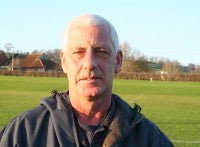 he Prepatory School site is managed by Bob Dutton, who has served Millfield for forty years. Bob, like his colleagues, maintains the pitches with the same passion and drive. Again, all the pitches at his site are natural soil with no drainage and rely heavily on good cultural practices to keep them operational.
he Prepatory School site is managed by Bob Dutton, who has served Millfield for forty years. Bob, like his colleagues, maintains the pitches with the same passion and drive. Again, all the pitches at his site are natural soil with no drainage and rely heavily on good cultural practices to keep them operational.
Prep School grounds include:
• Seven rugby pitches
• Four cricket squares and artificial nets
• Two equestrian arenas and paddocks
• Eight artificial tennis and netball courts
• A nine hole golf course
• Five boarding houses and gardens
T he secret to Millfield's success, both off and on the field of play, is employing dedicated, qualified staff and, in the case of the grounds, the right choice of machinery and products to effectively maintain them to the expected standard. It was a pleasure to see such a high standard of workmanship.
he secret to Millfield's success, both off and on the field of play, is employing dedicated, qualified staff and, in the case of the grounds, the right choice of machinery and products to effectively maintain them to the expected standard. It was a pleasure to see such a high standard of workmanship.
What makes it more interesting is that most of the playing pitches are soil based with no drainage. The condition of these facilities is due to using the right equipment and products at the right time and benefitting from extensive staff knowledge (understanding good cultural practices) and the passion and pride they display in carrying out their work.
Millfield is in good hands, and the level of student participation and success at representing their country in sport is surely an indicator of the good work being carried out by all the groundstaff at the School.
